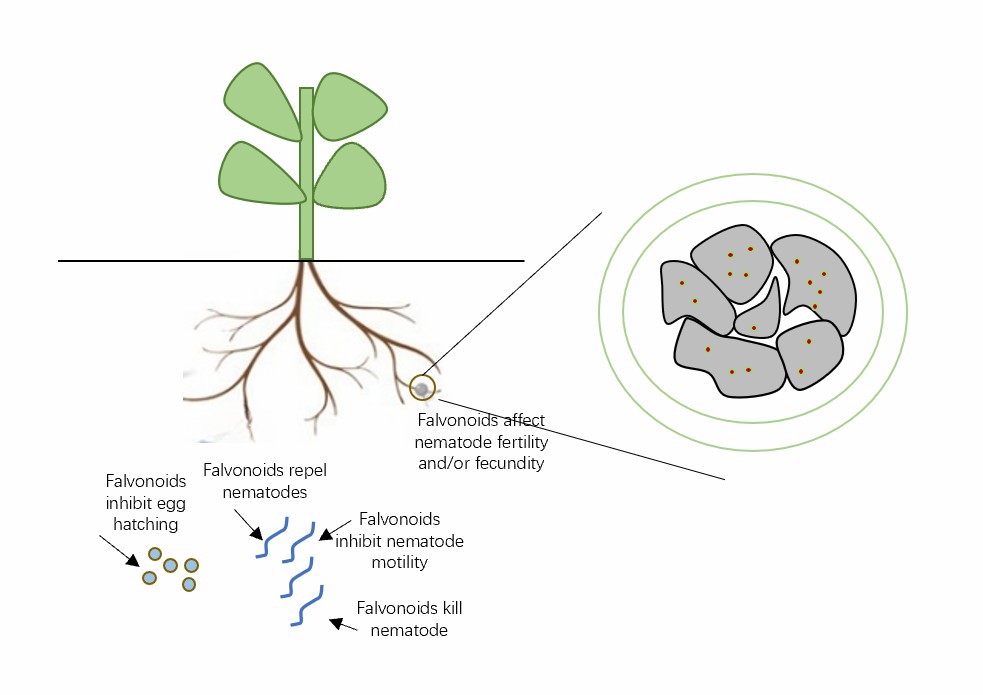Control of Plant Nematodes by Flavonoids
Flavonoids constitute a large class of secondary carbon-based metabolites in all land plants. More than 10,000 different types of flavonoids have been described from various plant species. Flavonoids have long been implicated in plant resistance to pests and diseases other than plant nematodes. They are also among the most widely studied plant secondary metabolites about plant nematode resistance. There are several flavonoid subgroups based on their structural properties, including chalcones, flavones, flavonols, flavandiols, anthocyanins, condensed tannins, aurones, isoflavonoids, and pterocarpans.
Lifeasible is a leading provider of comprehensive, high-quality services for plant science. Our platform is equipped with state-of-the-art facilities and highly experienced staff to assist in areas of plant nematode control by flavonoids. We guarantee credible results for our customers all over the world.
Analysis of the Glyceollin I
- Glyceollin I is a glyceollin, a type of prenylated pterocarpan. It is a phytoalexin found in the soybean. Glyceollin called phytoalexins, are frequently synthesized and accumulated in soybeans in response to inoculation with incompatible pathogens and are associated with resistance against certain fungal, bacterial, viral, and nematode diseases.
 Fig.1 Flavonoids play multiple roles during plant-nematode interactions.
Fig.1 Flavonoids play multiple roles during plant-nematode interactions.
- Lifeasible provides analysis services of glyceollin I against plant nematodes, including accumulation of glyceollin I in different species, the spatial and temporal distribution during nematode infection, and gene expression of glyceollin I.
- In addition, we also provide an analysis of the mechanism of action of glyceollin I on nematodes, such as inhibition of nematode respiration, activation of plant allergic response, induction of plant resistance response, and others.
Analysis of the Medicarpin
- Medicarpin is a pterocarpan, a derivative of isoflavonoids, which did show nematocidal effects. Coumestans, oxidized pterocarpans, appear to be significant phytoalexins in plant-nematode interactions.
- We help our clients analyze the role of medicarpin in nematode control, including nematode inhibition concentration analysis, medicarpin-related gene expression analysis, nematode resistance mechanism analysis, etc.
Analysis of the Other Flavonoids
- As for juvenile plant nematodes, flavonoids can induce quiescence by slowing down their movement, resulting in periods of reversible inactivity, modifying their migration toward the roots by repelling them and killing them.
- In addition to the above services, we help our clients analyze other flavonoids, including daidzein, genistein, formononetin, sakuranetin, phaseolin, psoralidin, coumestrol, medicarpin-3-O-glucoside-6''-O-malonate, and formononetin-7-O-glucoside-6''-O-malonate.
Lifeasible provides fast turnaround, and high-quality services at competitive prices for customers worldwide. Our advanced technical platforms can help our clients solve the problems they may encounter in research based on years of experience. If you are interested in our services or have any questions, please feel free to contact us or make an online inquiry.
For research or industrial raw materials, not for personal medical use!
 Fig.1 Flavonoids play multiple roles during plant-nematode interactions.
Fig.1 Flavonoids play multiple roles during plant-nematode interactions.